In 2010, Kitan Club released a set of 8 jellyfish (well, technically 6 scyphozoans and 2 hydrozoans) in their Nature Techni Colour line. These figures were advertised as ‘soft strap’, meaning they were soft and rubbery and had a strap attached to the top of the bell (disc) so they can be dangled from hooks or other support or worn on keychains, etc. This strap could be easily unscrewed from the animal, leaving a tiny, non-obtrusive hole. This was ideal for collectors who didn’t want to display them with the strap. When I buy ‘strap figures, I invariably remove the strap, but this time I tried something new (more on that at the end of the post). In 2013, the set was re-released as ‘soft strap luminous’ with the 8 figures now having the ability to glow in the dark. In 2015, after Ikimon bought the rights to the NTC line, the set was released for a third time, but this time the straps were metal keychains that attached through a rubbery loop on the bell of the animal. The only way for the strap to be removed was to alter the figure by cutting the loop from the main body of the animal, something that is not easy to do without leaving evidence of such surgery. Today we will be looking at the third set, the 2015 release by Ikimon.
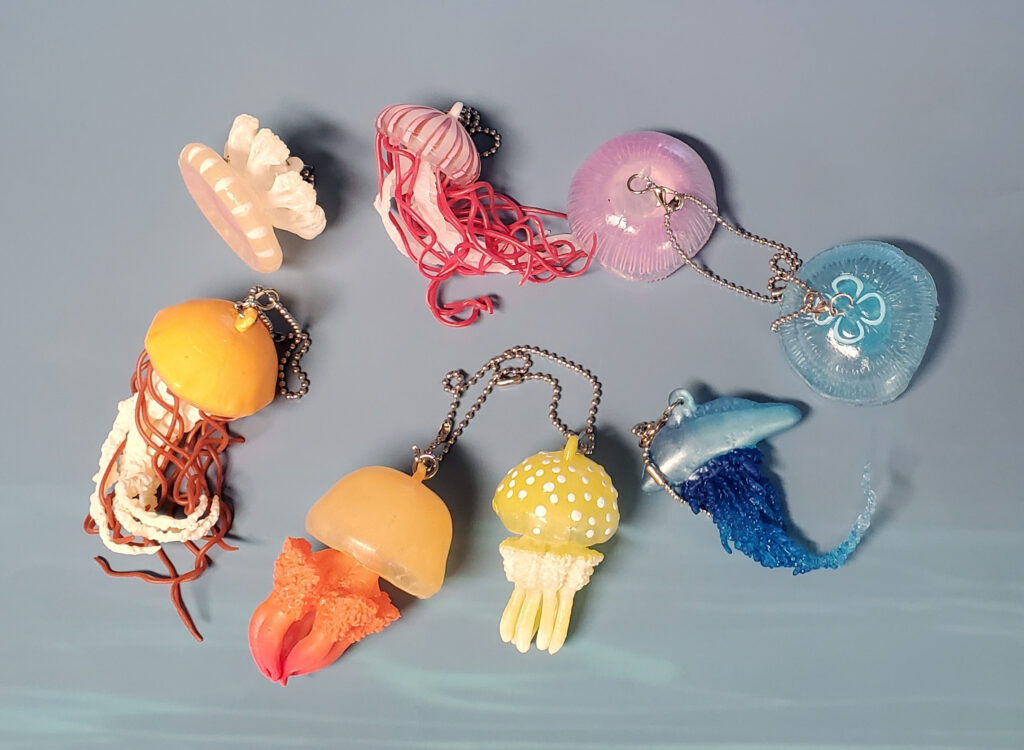
This review, like many of my ‘set’ reviews are basic overviews of the entire collection. It does not preclude others from doing in-depth reviews of individual figures (or reviews of the entire collections released in 2010 and 2013, for that matter). For each species, I have brief bullet points with the geographic distribution, habitat, size and scale, and relative frequency of the species in toy/figure form and other examples (at least those I am personally aware of).
Now, on to the species (in alphabetical order):
Aequorea victoria (crystal jelly)
- Distribution: West Coast of North America, from the Bering Sea to southern California
- Habitat: Pelagic, usually near shores, at depths of 0-6 meters
- Size and scale: Bell 4.8 cm, within scale 1:1 (range 1.6:1-1:1.5)
- Frequency of species as toy/figure and other examples: Unique (as a sculpt).

Aurelia aurata (moon jelly; common jelly)
- Distribution: Circumglobal in tropical, subtropical, and temperate seas and oceans
- Habitat: Pelagic to brackish, at depths of 0-1,250 meters
- Size and scale: Bell 5.0 cm, for a scale of 1:5-1:10
- Frequency of species as toy/figure and other examples: Uncommon (although probably the most commonly made jellyfish at the species level); other examples by Kaiyodo (few), K&M International, Qualia, For Corporation (alongside baby green sea turtles), and Epoch (larva).
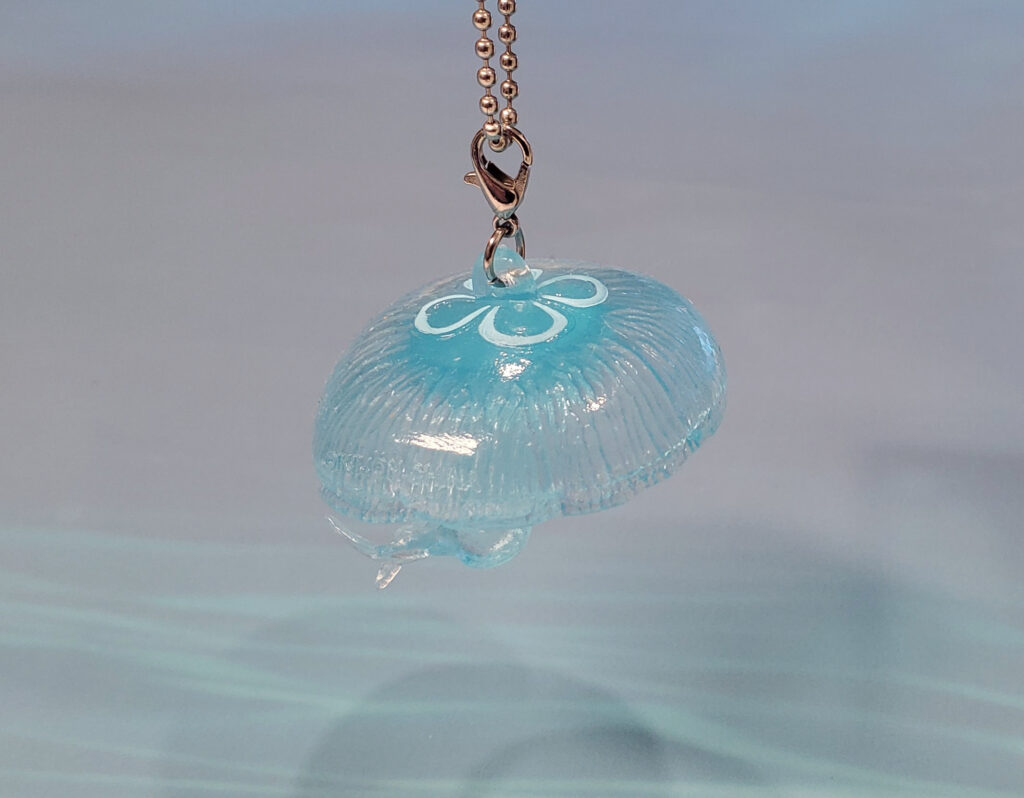
Cassiopea ornata (upside-down jellyfish)
- Distribution: West Pacific
- Habitat: Pelagic, tropical, usually in shallow waters around mangrove trees at depths of 0-1.5 meters
- Size and scale: Bell 4.0 cm for a scale of 1:3
- Frequency of species as toy/figure and other examples: Rare; also made by Qualia.

Chrysaora fuscescens (Pacific sea nettle; West Coast sea nettle; brown sea nettle)
- Distribution: North and East Pacific, from Japan to the Gulf of Alaska and along the West Coast of North America, from Canada to Mexico
- Habitat: Pelagic, subtropical, at depths of 0-80 meters
- Size and scale: Bell 3.8 cm for a scale of 1:7.9-1:13
- Frequency of species as toy/figure and other examples: Rare; other examples by Ikimon and (possibly) K&M International.
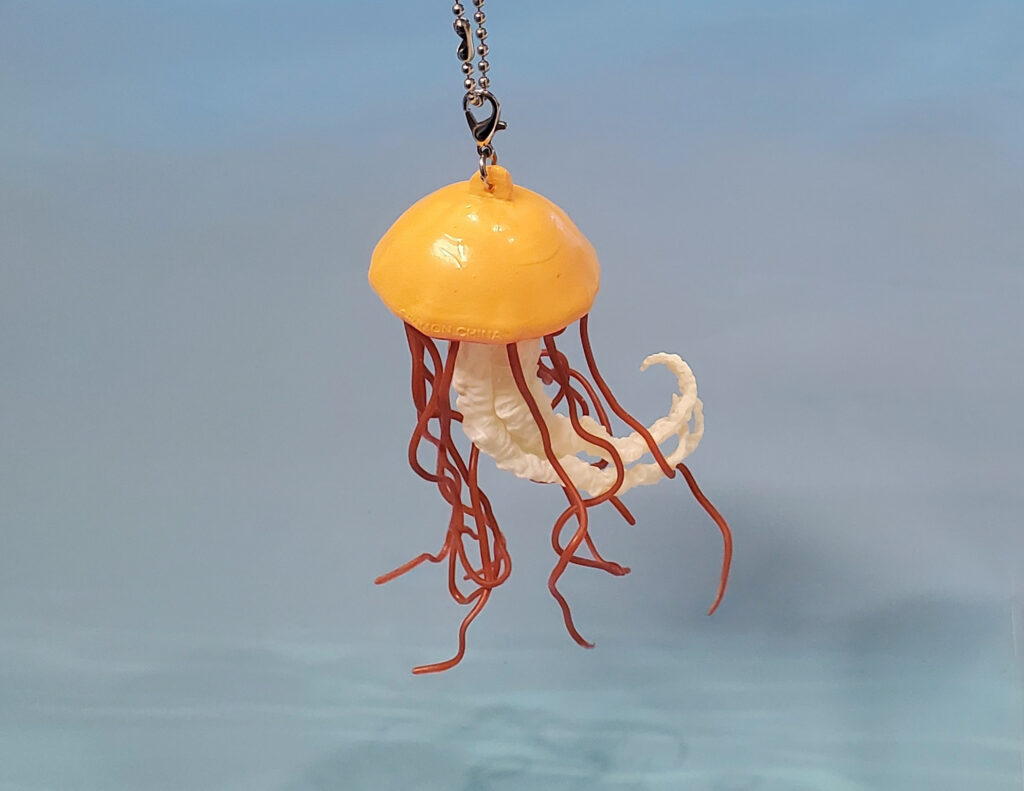
Chrysaora pacifica (Japanese sea nettle)
- Distribution: Northwest Pacific
- Habitat: Pelagic, at depths of 0-200 meters
- Size and scale: Bell 3.2 cm for a scale of 1:4.7-1:6.6
- Frequency of species as toy/figure and other examples: Unique to very rare. According to the Nature Techni Colour website, the original 2010 Kitan Club version of this figure and the 2013 glo-in-the-dark version were marketed as the northern sea nettle, C. melenaster. Interestingly, on the same site, today’s figure is marketed as the ‘Pacific’ sea nettle, C. quinquecirrha (even though that is the Latin name for the Atlantic sea nettle). The paper that accompanied my figure does indicate C. pacifica, however, and in my opinion the accompanying paper trumps the website, which might represent an editorial mistake (besides, it’s unlikely that a set of Pacific animals, all of which occur in the waters around Japan, would include a species endemic to the Atlantic Ocean). Now I am curious what the papers for the 2010 and 2013 versions say!

Mastigias papua (spotted jelly; golden medusa; lagoon jelly; Papuan jellyfish)
- Distribution: Indo-West Pacific
- Habitat: Pelagic, at depths of 0-100 meters
- Size and scale: Bell 3.3 cm, within scale 1:1 (range 1.1:1-1:2.4)
- Frequency of species as toy/figure and other examples: Uncommon to rare; other examples by Kaiyodo, Qualia, K&M International, and Colorata (as prey for the ocean sunfish, Mola mola).

Physalia physalis (Portuguese man o’ war)
- Distribution: Widespread, occurring in the Pacific, Atlantic, and Indian Oceans, the Caribbean, and the Sargasso Sea
- Habitat: Pelagic, usually at the water’s surface
- Size and scale: Pneumatophore 5.0 cm for a scale of 1:1.8-1:6
- Frequency of species as toy/figure and other examples: Rare; other examples by K&M International and Takara Tomy A.R.T.S.
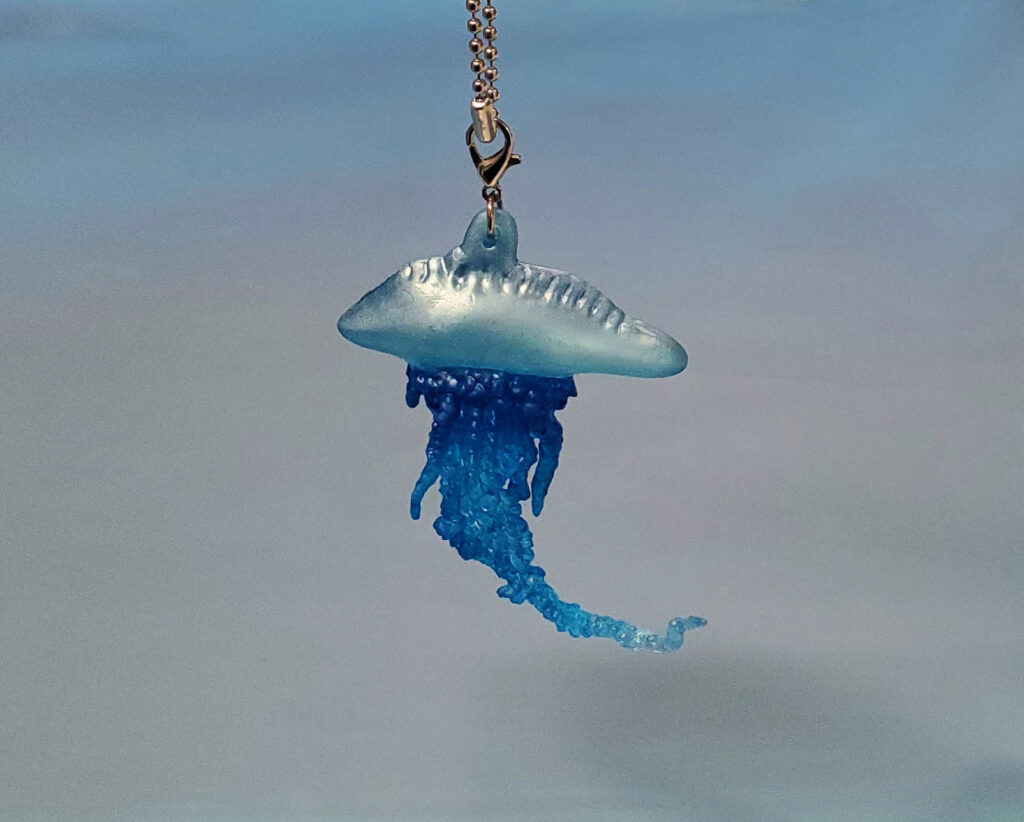
Rhopilema esculentum (flame jellyfish)
- Distribution: West Pacific
- Habitat: Pelagic to neritic, marine to brackish; at depths of 10-20 meters
- Size and scale: Bell 4.0 cm for a scale of 1:17.5 for a maximum-sized specimen
- Frequency of species as toy/figure and other examples: Very rare; also made by Qualia.
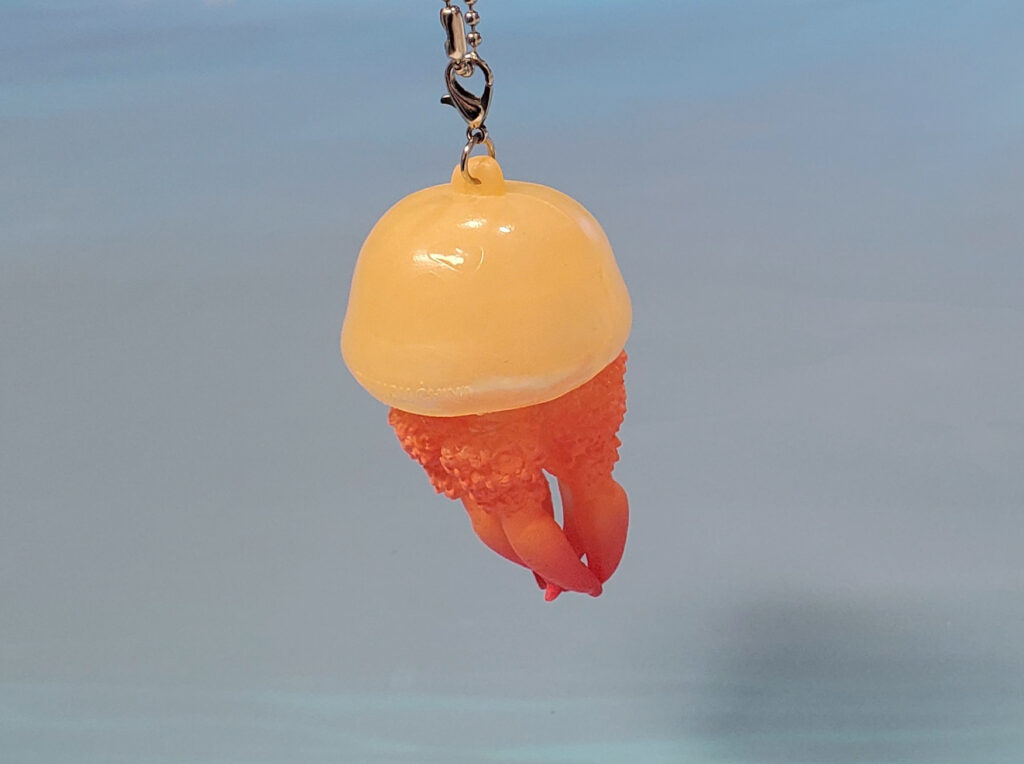
This set is a great way to get 8 species of ‘jellyfish’ (pelagic cnidarians) in one set. There are several other jellyfish collections, but none have this level of species diversity. It comes recommended to collectors of interesting taxa or those that specialize in sea life. Figures can often be purchased individually or as part of complete sets on eBay as well as Japanese auction sites.
Here is a quick-and-dirty pic of how I am currently displaying the figures on my shelves (sorry, it’s on a bottom shelf and the lighting isn’t great down there). Given the challenges of cleanly cutting away the loop, I tried to find a creative way for displaying them while keeping them as strap figures.

Disclaimer: links to Ebay and Amazon on the AnimalToyBlog are affiliate links, so we make a small commission if you use them. Thanks for supporting us!




I did buy the set but didn’t retain them for very long because of their rubber band like material
Hello friend! I have the Physalia physalis myself from a flea market bin. The metal loop that links the metal clip and the built-in rubber loop is not welded shut, it is only bent closed. If you have a pair of fine-tipped long-nose pliers, you can twist that metal loop open and free your jellies!
yeah, but I also don’t like the rubber loop that is left behind. But you are correct, removing the strap itself is easy. Thanks for elaborating!